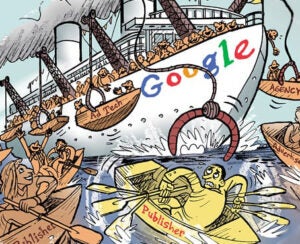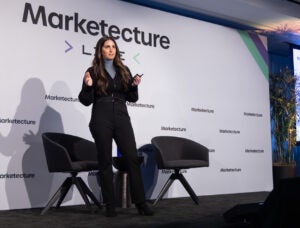“The Sell Sider” is a column written by the sell side of the digital media community.
Today’s column is written by Kurt Donnell, president and CEO of Freestar.
I have something to confess. I am a recovering attorney.
Specifically, I was an M&A attorney, which might seem exciting, but is actually rather mundane. The business folks make the deal, then hand it over to the lawyers, who go through a painstaking exercise of risk mitigation.
While I thought I’d spend my time structuring blockbuster transactions, my formative years were mostly spent performing due diligence. As an eternal optimist, I want to believe that most services are delivered as advertised. However, I can confirm this is not necessarily the right mindset when assessing a potential partner.
More than any other industry, programmatic advertising relies on partnerships and third-party solutions. It is impossible to vertically integrate all of the functions in the programmatic advertising chain. As such, every player in the ad tech ecosystem has dozens or even hundreds of partnerships.
With so much reliance on third parties in all of our businesses, it is important to remain appropriately skeptical and vet each company.
This is particularly true given the prevalence of “sequential liability” in programmatic advertising, which is a legal concept that means if the person above you in the flow of advertising dollars doesn’t get paid, you don’t get paid.
While this has not historically been a big issue outside of a few notable incidents, such as the Sizmek bankruptcy, it becomes a far bigger concern when heading into times of economic uncertainty where any fault lines can quickly turn into earthquakes.
With all of that in mind, here are a few things to consider when assessing any potential partnership:
Partner size: Look at employee count and revenue. Is the company big enough to weather a storm? Scale matters both in terms of the resources allocated to building new products and servicing their customers and the flexibility to stay afloat in difficult times.
Profitability: This is easy to check for public companies, but not private companies. Fundraising has become increasingly challenging for unprofitable businesses, so ensuring your partner is not dependent on their next round of financing is more important than ever.
Attrition: Seeing a number of employees leave around the same time is often a canary in the coal mine, particularly if you know these departing employees are top performers. Great people don’t typically go down with the ship, so pay attention to who has made moves on LinkedIn.
Boom and bust growth: Does the potential partner have a history of cyclical growth followed by layoffs? While many great companies grow really quickly and rationalize expenses at some point, doing so repeatedly is often a bad sign. It can lead to unrest on the team and can also be detrimental if you end up with a new point person multiple times a year.
Payment problems: A Google or Reddit search will likely uncover whether the company has a history of late payments, which can mean systemic cash flow issues. There are also companies like Oarex that track payment history from dozens of players in the programmatic space and publish a list of its top payors.
Pricing: Consider whether the pricing or revenue share is sufficient to support the business and, alternatively, if there is too much markup from their costs. There are times when a company needs to “invest” in market share, but for a business to be sustainable, the pricing must support all of the associated costs. Build a mini model of their possible costs. This exercise will help you assess if the business seems viable and, on the flip side, if the margin seems a bit too healthy.
Does it simply seem too good to be true? If so, it probably is. Plain and simple, if the promises made by the other party are too rosy, it’s probably time to find the catch.
While much of this seems to be common sense, I have seen too many unvetted partnerships end with regret, financial losses and wasted time. The optimistic recovering attorney in me hopes you will avoid these woes with a bit of extra due diligence. As they say, an ounce of prevention is worth a pound of cure.
Follow Freestar on LinkedIn and AdExchanger (@adexchanger) on Twitter.
For more articles featuring Kurt Donnell, click here.













